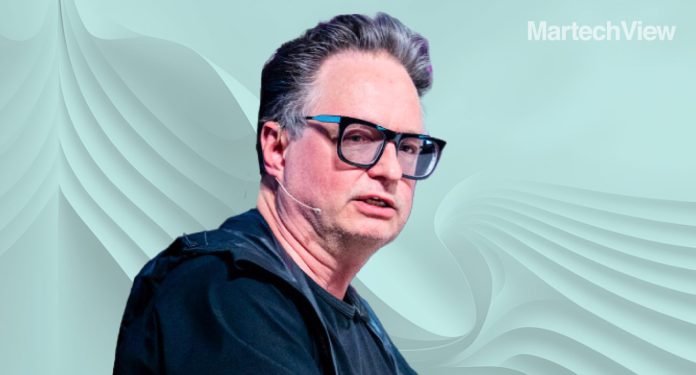Rodger Werkhoven, Independent Creative Director at OpenAI and Executive Creative Director at iO discusses the role of Generative AI in the marketing industry.
OpenAI continues to be in news circles for various reasons. At times, it is for award-winning authors suing the company for copyright infringement and, at others, for disrupting water supply when training the large language model ChatGPT on massive data and cooling the supercomputers.
Remember when AI defeated world champion Garry Kasparov in a game of chess? And won the $1 million prize in the game of Jeopardy? That’s all ancient news, deemed nothing compared to the tech explosion which occurred upon the launch of ChatGPT by OpenAI.
Sam Altman, the CEO of OpenAI, took a world tour with the mission to convince AI doomers about the goodness of the technology. At the same time, Geoffrey Hinton, referred to by many as the Godfather of AI, has now come to be known as an AI doomer himself. An artificial intelligence pioneer and the person behind the technology running AI systems, Hinton now regrets his life’s work and continues to warn people of AI’s threats to humanity.
The question that looms: Will AI drive humans to irrelevance?
Is the science fiction dream of building a safe artificial general intelligence (AGI) coming true?
We spoke to Rodger Werkhoven, Independent Creative Director at OpenAI and Executive Creative Director at iO, about the AI news waves and its impact on the marketing landscape. Werkhoven says AI is often depicted as an extreme in popular culture, either as an overpromise, an omnipotent force for good, or a rogue entity intent to destroy humanity because it concluded the planet is too small for us both.
Excerpts from the interview:
You’ve said this – “AI will not replace you; a person using AI will.” Please elaborate.
History has a way of repeating itself. As computers began to slowly infiltrate the creative industry, many resisted adopting them. They feared that ‘with the cold automation of digital computers,’ the emotional essence of advertising would be lost. Those people are replaced by people using computers in ways that prove conservative thinking wrong.
As our industry evolves, there’s a noticeable shift in hiring and promotion trends. Roles requiring familiarity with new tools and strategies are in demand, probably jeopardizing ‘anti-AI people’s’ positions. The complacent individual will appear more isolated, both in professional discussions and collaborative projects. They’re often not the first choice for leading new initiatives.
While the AI-denier has a legacy of past successes, there’s a sense of stagnation. The lack of recent achievements or innovations becomes more evident. Given the industry’s rapid evolution, the ‘anti-AI person’ might face challenges in retaining their role. Those who leverage AI tools effectively will have a competitive advantage in both marketing processes and the creative process.
How can marketing professionals learn to work in tandem with AI? Where do they start?
Platforms such as Coursera, Udemy, and edX offer tailored courses on AI basics for those without a technical background. Additionally, attending workshops or seminars focused on AI in marketing can provide valuable hands-on experience.
By researching current AI applications in marketing, such as chatbots, predictive analytics, content generation, and customer segmentation, professionals can gain a clearer picture. Studying successful AI implementations in marketing campaigns can further enhance this understanding. For those just starting, it’s advisable to begin with user-friendly tools.
In the ever-evolving field of AI, continuous learning is paramount. Subscribing to AI and marketing journals, blogs, or newsletters can keep professionals updated. As one becomes more adept with basic AI tools, considering advanced courses can further deepen understanding.
Lastly, joining communities that focus on the intersection of AI and marketing can be immensely beneficial. Engaging in forums, online communities, or local groups offers opportunities for knowledge exchange, forming partnerships, and staying abreast of industry trends. There’s a lot on LinkedIn, too.
While ChatGPT has enjoyed mass attention, AI developers have faced considerable stigma as well. What is it about Generative AI that most people misunderstand?
Media portrayals don’t always help. AI is often depicted as an extremity in popular culture, either as an overpromise, an omnipotent force for good, or a rogue entity intent to destroy humanity because it concluded the planet is too small for us both, which leads to skewed perceptions. When someone claims that the AI they’re studying has become sentient, all the sensationalist news channels immediately jump on that baseless claim. Yet, the AI that discovered a remedy for a resistant deadly bacteria isn’t deemed exciting enough.
Also, people think AI steals. When AI is trained on data and images from the internet, it’s “exposed” to vast amounts of information. The AI doesn’t “copy” this data in the way humans copy a text or an image. Instead, it analyses patterns, structures, and relationships within the data. Through this process, the AI learns to recognise patterns and make predictions or generate outputs based on its training. It is just like a human artist who doesn’t reproduce the exact artwork they see in a museum.
Many of the concerns stem from the fear of the unknown. To a significant portion of the population, AI is a complex and somewhat abstract concept, leading to apprehension, especially given its rapid evolution. This unease is further fuelled by concerns over job displacement. As AI systems become more sophisticated, there’s a growing sentiment that they might replace human roles, causing unemployment. However, it also paves the way for new roles and opportunities previously non-existent.
How can companies maintain an authentic brand voice while using AI for personalization in campaigns?
Integrating AI into branding and campaigns is complex, with legal and technical challenges. I recommend partnering with specialists in branding and data-driven campaigning, like iO, where since recently, I have been the Executive Creative Director for four days a week (so I still have a day a week testing OpenAI tech). Companies should establish clear brand guidelines before using AI and strongly consider locally-operated AI systems to avoid legal issues.
Ensuring content aligns with the brand’s identity requires human oversight: Feedback mechanisms are essential for refining AI-driven campaigns. Transparency boosts consumer trust, especially when they know content is AI-influenced. Testing campaigns on smaller audiences before a full launch is also advisable.
What kind of guardrails do you think we need before brands can use Generative AI to speak with customers, and represent the brand voice?
The most important ones:
Human Oversight: No matter how advanced the AI, human review is essential. Marketers should always vet AI-generated content to ensure it matches the brand voice, is contextually relevant, and doesn’t inadvertently convey unintended messages.
Ethical Considerations: Ensure that AI communications respect privacy and ethical standards. This includes not using personal data without consent and avoiding overly intrusive or personalized messages that might make recipients uncomfortable.
Limit Scope of AI Interactions: Initially, limit the topics or queries that AI can address. This ensures that the AI operates within its trained expertise and doesn’t venture into areas where it might make errors.
Continuous Training: AI models should be updated regularly with new brand materials, feedback, and any changes in brand strategy or voice. This ensures the AI’s understanding of the brand remains current.
Error Handling: Implement robust error-handling mechanisms. If the AI encounters a query or situation it can’t handle, it should gracefully redirect the user to human support or provide a generic response.
Legal and Regulatory Compliance: It’s imperative that AI-driven communications adhere to all pertinent laws and regulations, particularly those related to data protection, advertising standards, and consumer rights. Engage a company like www.iodigital.com/en, which has a proven track record of expertise and proficiency in this intricate domain, to construct a dedicated local AI model for you. This ensures guaranteed compliance with all legislative requirements.










